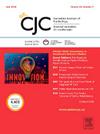Transcatheter Aortic Valve Replacement in Aortic Stenosis Patients With New York Heart Association Functional Class III or IV
IF 5.8
2区 医学
Q1 CARDIAC & CARDIOVASCULAR SYSTEMS
引用次数: 0
Abstract
Background
Patients with symptomatic aortic stenosis are a vulnerable population with associated cardiac damage and a significant comorbidity burden. In this study we aimed to determine the rate, factors associated with, and prognostic value of poor functional status (New York Heart Association [NYHA] class III-IV) in patients with severe aortic stenosis undergoing transcatheter aortic valve replacement (TAVR).
Methods
This multicenter study included 6363 transarterial TAVR patients, classified according to baseline functional status (NYHA class I or II vs III or IV).
Results
A total of 3800 (60%) patients presented with NYHA class III or IV before the TAVR procedure. Atrial fibrillation (odds ratio [OR], 1.32; 95% confidence interval [CI], 1.11-1.58; P = 0.002), chronic kidney disease (CKD; OR, 1.73; 95% CI, 1.45-2.05; P < 0.001), chronic obstructive pulmonary disease (COPD; OR, 1.65; 95% CI, 1.32-2.05; P < 0.001), reduced left ventricular ejection fraction (OR, 2.28; 95% CI, 1.70-3.05; P < 0.001), and moderate and severe pulmonary hypertension were associated with a poor functional status. At 1-year follow-up, patients with NYHA class III or IV had higher rates of mortality (8.81 per 100 person-years [95% CI, 7.57-10.15] vs 13.12 per 100 person-years [95% CI, 11.80-14.58]; log rank, P < 0.001) and heart failure hospitalization (8.25 per 100 person-years [95% CI, 7.05-9.65] vs 12.5 per 100 person-years [95% CI, 11.24-14.00]; log rank, P = 0.005). Comorbidity factors (COPD, CKD) and signs of cardiac damage (atrial fibrillation, pulmonary hypertension) determined an increased risk of poorer clinical outcomes (P < 0.01 for all).
Conclusions
More than half of the patients undergoing TAVR in the contemporary era have presented with advanced functional class before the procedure, and this was associated with a greater comorbidity and cardiac damage burden. Patients with poorer baseline functional status exhibited worse clinical outcomes at 1-year follow-up. These findings highlight the need for further study on earlier interventions for patients with aortic stenosis.

经导管主动脉瓣置换术治疗纽约心脏协会功能三级或四级主动脉瓣狭窄患者。
背景:有症状性主动脉瓣狭窄的患者是易患的人群,伴有相关的心脏损伤和显著的合并症负担。本研究旨在确定严重主动脉瓣狭窄患者行经导管主动脉瓣置换术(TAVR)时功能状态不良(NYHA III-IV级)的发生率、相关因素和预后价值。方法:这项多中心研究纳入了6363例经动脉TAVR患者,根据基线功能状态(NYHA I-II级与III-IV级)进行分类。结果:共有3800例(60%)患者在TAVR手术前出现了NYHA III-IV级。心房颤动(OR:1.32,95%CI:1.11-1.58,p=0.002),慢性肾脏疾病(OR:1.73, 95%CI:1.45-2.05)。结论:当代接受TAVR的患者中,超过一半的患者在手术前表现为高级功能等级,这与更大的合并症和心脏损伤负担相关。基线功能状态较差的患者在1年随访时表现出较差的临床结果。这些发现强调了主动脉瓣狭窄患者早期干预研究的重要性。
本文章由计算机程序翻译,如有差异,请以英文原文为准。
求助全文
约1分钟内获得全文
求助全文
来源期刊

Canadian Journal of Cardiology
医学-心血管系统
CiteScore
9.20
自引率
8.10%
发文量
546
审稿时长
32 days
期刊介绍:
The Canadian Journal of Cardiology (CJC) is the official journal of the Canadian Cardiovascular Society (CCS). The CJC is a vehicle for the international dissemination of new knowledge in cardiology and cardiovascular science, particularly serving as the major venue for Canadian cardiovascular medicine.
 求助内容:
求助内容: 应助结果提醒方式:
应助结果提醒方式:


